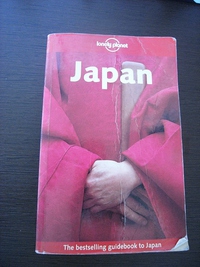2017年11月01日
英語で唐津くんち
伊万里くんち終りました。伊万里くんちを過ぎると秋も深まり寒くなりますね。『英語で伊万里くんち』。
さて、11月は唐津くんちですね。
Time/Date: the festival is held from the 2nd to the 4th of November
Location: around the castle town in Karatsu city including Karatsu Shrine.
Features: the surfaces of the floats called Hiki-Yama are made of 200 layers of lacquer finished Japanese paper coated with gold and silver leaf. Artistic craftsmanship and an enormous budget were needed to create and maintain them. (So far, each float has been recoated with lacquer several times.)
The position of each float in the procession was determined by following the chronological order in which the floats were manufactured. The oldest float, Akajishi, was made in 1819 in the Edo era and the newest one, Shichihou Maru, was made in 1876 in the Meiji era.
History;Ishizaki Yosibei was an important figure in the early days of the festival's history. He was a master of wooden sculptures in Katana-cho, who was inspired by Kyoto Gion Yamakasa (a floating festival in Kyoto). He was the first to create a float called "Akajishi" or red lion. He dedicated it to the Karatsu Shrine.
In the Edo era, commoners were not allowed to enter the shrine because the shrine was exclusively managed by the warrior class of the Karatsu clan. But during Kunchi, the general public was allowed to enter the shrine to celebrate the festivals.Firefighters in each town around Karatsu Castle used to manage each Hiki-Yama in Edo era. Participants are wearing beautiful Happi which the firefighters used to wear. These Happi are designed in different ways in each town.
The shouting is "Enyah! Enyah!"
The second day of the festival is called Otabisho-Shikou. At the event, all of the Hikiyama are pulled in and out of a sand area called Hikikomi and Hikidashi. Due to the heavy weights of the floats, it must be quite difficult to move them; however, this hardship has become a crowd-pleasing spectacle. On the final day, all of the Hikiyama are paraded around the city during the daytime.
Karatsukunchi is designated as a national intangible asset.

Aka-Jishi (Red Lion) Katana-cho

Tai (Porgy) Uoya-cho

Ao-Jishi(Blue Lion) Naka-cho

Hiryu(Flying Dragon) Sin-cho

Houou-Maru(Phoenix Sihip) Ooishi-cho

Urasima-Tarou(A Boy of An Allegory) Zaimoku-cho

Kin-Jishi(Golden Lion) Honmachi-cho

Nana Hou-Maru (A 7 treasures Ship) Egawa-cho

Sakenomi-Douzi (A Boy of A Prodigious drinker) Yoneya-cho

Syachi(Orca) Mizunushi --cho

Takeda Shingen :(A Feudal Warlord) Momen-cho

Tamatori-Jishi( A Lion ) Kyou-machi

Uesugi-Kenshin(A Feudal Warlord) Hirano-cho

MinamotonoYoshitsune (A Genious Warrior ) Gohuku-cho
all rights reserved
10年以上前に撮った夜の曳山.
フォトジェニックな姿に酔いしれました。
さて、11月は唐津くんちですね。
Time/Date: the festival is held from the 2nd to the 4th of November
Location: around the castle town in Karatsu city including Karatsu Shrine.
Features: the surfaces of the floats called Hiki-Yama are made of 200 layers of lacquer finished Japanese paper coated with gold and silver leaf. Artistic craftsmanship and an enormous budget were needed to create and maintain them. (So far, each float has been recoated with lacquer several times.)
The position of each float in the procession was determined by following the chronological order in which the floats were manufactured. The oldest float, Akajishi, was made in 1819 in the Edo era and the newest one, Shichihou Maru, was made in 1876 in the Meiji era.
History;Ishizaki Yosibei was an important figure in the early days of the festival's history. He was a master of wooden sculptures in Katana-cho, who was inspired by Kyoto Gion Yamakasa (a floating festival in Kyoto). He was the first to create a float called "Akajishi" or red lion. He dedicated it to the Karatsu Shrine.
In the Edo era, commoners were not allowed to enter the shrine because the shrine was exclusively managed by the warrior class of the Karatsu clan. But during Kunchi, the general public was allowed to enter the shrine to celebrate the festivals.Firefighters in each town around Karatsu Castle used to manage each Hiki-Yama in Edo era. Participants are wearing beautiful Happi which the firefighters used to wear. These Happi are designed in different ways in each town.
The shouting is "Enyah! Enyah!"
The second day of the festival is called Otabisho-Shikou. At the event, all of the Hikiyama are pulled in and out of a sand area called Hikikomi and Hikidashi. Due to the heavy weights of the floats, it must be quite difficult to move them; however, this hardship has become a crowd-pleasing spectacle. On the final day, all of the Hikiyama are paraded around the city during the daytime.
Karatsukunchi is designated as a national intangible asset.
Aka-Jishi (Red Lion) Katana-cho

Tai (Porgy) Uoya-cho

Ao-Jishi(Blue Lion) Naka-cho

Hiryu(Flying Dragon) Sin-cho

Houou-Maru(Phoenix Sihip) Ooishi-cho

Urasima-Tarou(A Boy of An Allegory) Zaimoku-cho
Kin-Jishi(Golden Lion) Honmachi-cho

Nana Hou-Maru (A 7 treasures Ship) Egawa-cho

Sakenomi-Douzi (A Boy of A Prodigious drinker) Yoneya-cho

Syachi(Orca) Mizunushi --cho

Takeda Shingen :(A Feudal Warlord) Momen-cho

Tamatori-Jishi( A Lion ) Kyou-machi

Uesugi-Kenshin(A Feudal Warlord) Hirano-cho

MinamotonoYoshitsune (A Genious Warrior ) Gohuku-cho
all rights reserved
10年以上前に撮った夜の曳山.
フォトジェニックな姿に酔いしれました。
「SHOGUN:将軍」と平戸と世界史
英語で長崎と天草地方の潜伏キリシタン関連遺産案内(序)
英語でトンテントン
相知の鵜殿(うど)の石仏群:英語でパワースポット
Lonely Planet Japan
英語でパワースポット:白蛇山岩陰遺跡
英語で長崎と天草地方の潜伏キリシタン関連遺産案内(序)
英語でトンテントン
相知の鵜殿(うど)の石仏群:英語でパワースポット
Lonely Planet Japan
英語でパワースポット:白蛇山岩陰遺跡











